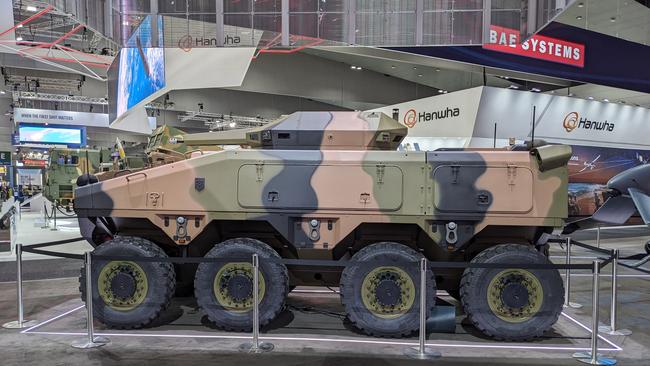ATLAS brings autonomy to the fight
Australia is not rich in human resources and must therefore ‘punch above its weight’ against a larger adversary – and the key to this is the development of autonomously operated vehicles.

As the war in Ukraine constantly demonstrates, the use of uncrewed systems on the modern battlefield has truly come of age.
Like Ukraine, Australia is not rich in terms of human resources and must therefore “punch above its weight” against a larger adversary – and the key to this is the development of autonomously operated vehicles.
The battlefield of the future will involve autonomous and semi-autonomous platforms operating in teaming arrangements with human beings to generate combat mass while minimising the number of people in harm’s way.
In response to these requirements, BAE Systems Australia has developed an 8x8 wheeled family of vehicles it calls the Autonomous Light Armour System (ATLAS), and the first variant was unveiled on the opening day of the Land Forces exhibition in Melbourne in September.
This initial variant is armed with a 25mm Bushmaster cannon and is known as the Collaborative Combat Variant (CCV), evolving from the conceptual stage to a real vehicle in only 12 months. Future developments will include a counter-UAS (uncrewed aerial systems, or drone) variant, an engineering vehicle, and a logistics vehicle.
ATLAS is also designed to operate with high levels of autonomy alongside the Australian Army’s existing tanks, infantry fighting vehicles and logistics platforms – albeit at a lower operating cost.
An example of this might be the use of several ATLAS CCV variants to accompany and protect a logistics convoy, which itself might be autonomously operated in the near future.
The autonomy system used by the ATLAS leverages work that BAE Systems Australia has done with the Army to develop its Optionally Crewed Combat Vehicles (OCCV), based on the elderly M113AS4 infantry fighting vehicles. About 20 OCCVs have been delivered to the army to help develop a trusted autonomous systems framework for the future.
“The only way we can protect people more than we do today is to remove them from the situation where they’re making first contact with the enemy,” BAE Systems Australia’s business development manager autonomy Stuart Bryden explains. “The CCV version, for example, can perform a range of missions, including direct fire, flank security, short-range air defence and long-range reconnaissance.”
Using “human in the loop” technology whereby a human has a monitoring and feedback role in the autonomous operation of ATLAS, BAE Systems says the system will be capable of “driving” itself, avoiding obstacles, planning its next route and making tactical decisions.
While ATLAS is designed in Australia, it makes use of proven and readily available systems to reduce risk and speed development. Included in this are the drive train, which is based on the UK’s Supercat HMT Extender, and, in the CCV variant, a 25mm Bushmaster cannon that is used in large numbers on the Army’s existing Australian Light Armoured Vehicle (ASLAV) vehicles.
Bryden says BAE Systems Australia plans to demonstrate the ATLAS’s capabilities during the large Talisman Sabre multilateral exercise next year.
“We could absolutely deliver a combat-ready prototype in two years from now if Army wants it,” he adds.


